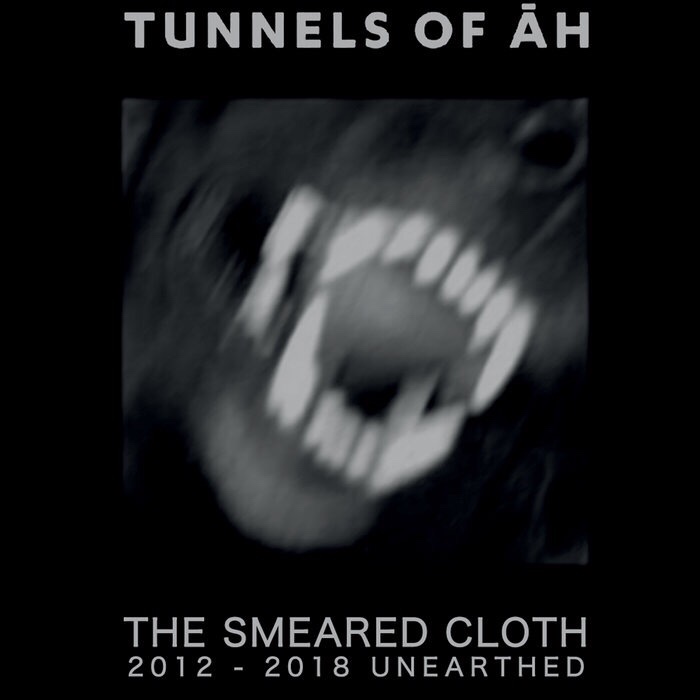
The Smeared Cloth collates together previously unreleased material from Stephen Āh Burroughs’s Tunnels Of Āh. Burroughs was formerly a founding member of Blast First unit Head Of David, a group that grew out of the Comicide duo.
Like those other projects, Tunnels Of Āh is brooding and impenetrable. My first play of this was through earphones on a crowded Northern Line train on a busy Monday morning; its sinister, grainy textures and harsh, enveloping blanket of dirty, primal sound left me looking at the world around me in a manifestly different way. It was almost as if these pieces allowed me to see through the veil of cheerful optimism that my fellow commuters had shrouded themselves with, revealing instead a swirling mass of uncertainty, paranoia and fear.
With the possible exception of the final track, ‘White Distribution’, which has a sort of springy euphoria to its unpredictable clusters of electronic echoes, this is a uniformly dark collection. I was reluctant to draw comparisons with anything I’d heard before, but I was unintentionally reminded of Coil here, specifically their unused work for Clive Barker’s Hellraiser. Pieces like ‘Aceldama’ and ‘To The Paschal Victim’ share a similarly ritualistic edge to the unused Coil cues, brutally forcing you to stare deeply into an abyss of swirling, tempting, unending darkness. These pieces find Burroughs intoning mysterious, oblique verse over undulating drones, intense, head-cleaning bass, scratchy percussion and hissing, sibilant sounds that seem to gnaw away at you ceaselessly. One of the highlights, ‘Multi-Storey’, occupies an interstitial zone of high-pitched whining, gravelly distortion, slowly-fluttering metallic drones and muted, crashing sounds. Taken together, these interventions feel like the macroscopic, slowed-down exploration of a car crashing headlong into the concrete wall of an abandoned, dimly-lit inner city carpark.
Other pieces like ‘Amorphophallus’ and ‘Fountains Of Light’ might, at least nominally, fall into a dark ambient category, but it is an uneasy and uncomfortable association. Dark ambient is often characterised by a feeling of foreboding and tension, whereas these pieces feel like that tension has abruptly snapped, replaced by a sort of clawing, incessant acquiescence and surrender.
In case it wasn’t obvious, this is not an easy listen, and one that definitely isn’t for the feint-hearted. These tunnels that Burroughs has constructed bore deep into sinister, uncomfortable territory, pathways to a twisted, savage part of our collective psyches that we rarely choose to acknowledge. When the first passengers took to the nascent, smoke-clogged Tube in London, they felt like they were being confronted with a hellish inversion of Victorian progress. Perhaps Tunnels Of Āh’s music was always there in those tight, constrained pathways beneath the surface, waiting for the right moment to be drawn out from behind their blackened and grimy brick walls.
The Smeared Cloth (2012 – 2018 Unearthed) by Tunnels Of Āh was released 16 June 2023 by Cruel Nature and Zoharum. Thanks to Steve.
Words: Mat Smith
(c) 2023 Documentary Evidence












